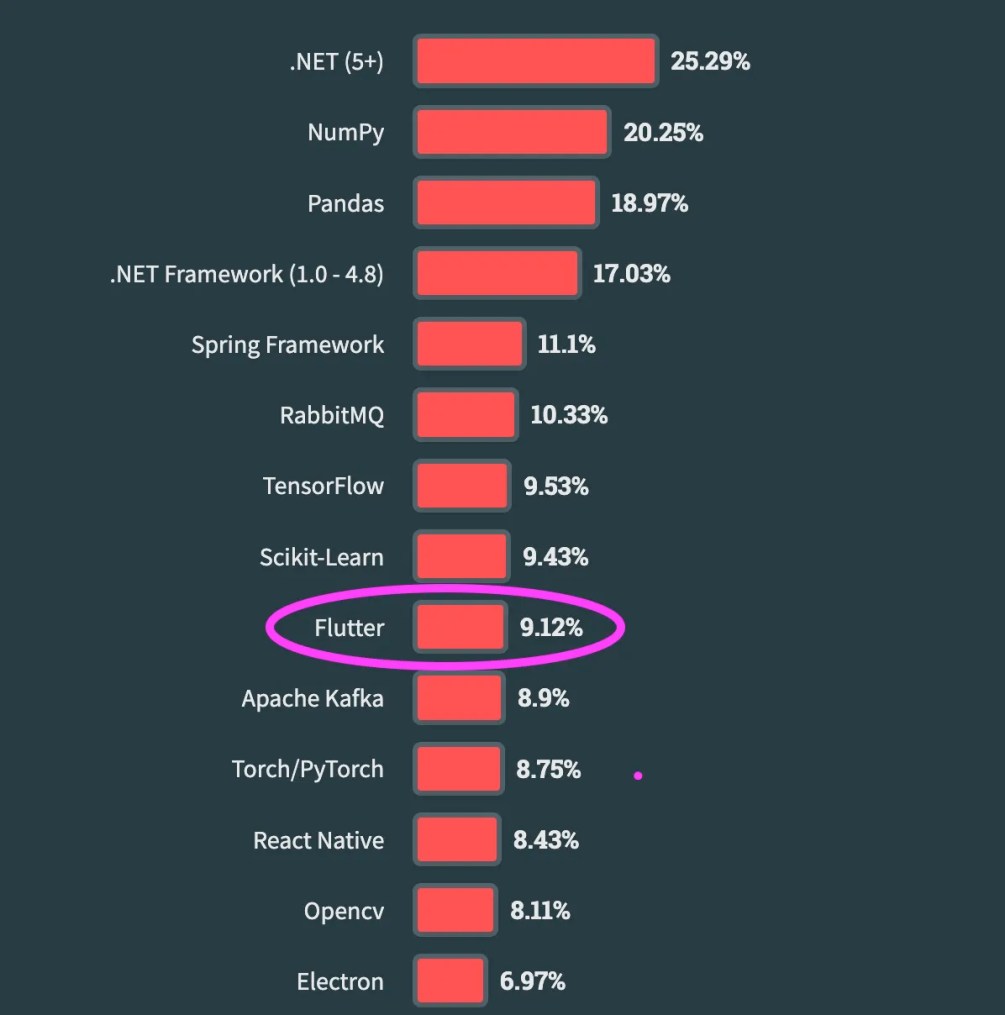Flutter represents an economical solution for companies aiming to rapidly test their concepts while seeking a scalable technology framework for future growth. This innovative platform allows businesses to target a wider audience across various devices through the use of a singular codebase, streamlining development and maximizing reach.
Table of Contents
Flutter: Revolutionizing Cross-Platform App Development
Flutter is a comprehensive software development kit (SDK) embraced by developers for creating versatile cross-platform applications. It stands out by enabling a unified codebase to seamlessly operate across various platforms, such as mobile and web, eliminating the necessity for distinct applications for each platform.
This approach to app development, known as cross-platform development, is celebrated for its ability to deliver superior digital products swiftly and efficiently, even with smaller teams. Flutter, in particular, has captured the admiration of the tech community for its effectiveness and ease of use. Highlighting its popularity, the 2023 Stack Overflow Survey crowned Flutter as the most beloved cross-platform technology among developers.

Launched by Google in 2017, Flutter rapidly surpassed its main rivals, Facebook’s React Native and Microsoft’s Xamarin. Developers often favor Flutter for its superior performance, the ‘hot reload’ feature, an extensive array of UI components and widgets, expedited product launch timelines, a supportive community, and an efficient development workflow.
Flutter and Dart: Powering Cross-Platform Development
Flutter is not a programming language but an SDK that empowers developers to build cross-platform applications with Dart, a programming language developed by Google. Dart, introduced in 2011, is an object-oriented language with a user-friendly syntax, complemented by a suite of effective tools to enhance mobile app development efficiency.
While Dart may not be as widely recognized as Java or JavaScript, its specialized nature doesn’t hinder learnability. For developers already familiar with object-oriented, class-based languages, picking up Dart can be a smooth transition, facilitating the creation of versatile apps through Flutter’s robust framework.

Understanding Flutter’s Role in Frontend and Backend Development
Flutter is a versatile framework adept at handling both frontend and backend tasks. Predominantly, developers lean towards using Flutter for frontend development, owing to its streamlined process for crafting visually appealing and responsive user interfaces. While Flutter is compatible with numerous backend-as-a-service (BaaS) platforms that seamlessly integrate with it, the necessity to construct a backend from the ground up is rare and typically reserved for projects with highly specific, custom features beyond the scope of standard BaaS offerings.
For the majority of development projects, Firebase, another Google innovation, offers a comprehensive backend solution that synergizes with Flutter effectively. Firebase provides an array of backend services that are usually more than sufficient for most app development needs, ensuring a cohesive and efficient development environment.
Major Brands Embracing Flutter for Mobile App Development
Flutter, a brainchild of Google, is the cornerstone for various applications within the tech giant’s ecosystem, including Google Pay, Stadia, and Google Ads. The roster of enterprises adopting Flutter extends well beyond Google, capturing the attention of global players like Alibaba Group, eBay, Toyota, BMW, iRobot, and Tencent. These industry leaders have incorporated Flutter into their mobile app development strategies, leveraging its robust capabilities to enhance their digital presence.
Frequently Asked Questions About Flutter
What is Flutter and why do companies choose it?
Flutter is a cost-effective and scalable software development kit (SDK) for building cross-platform applications. Companies opt for Flutter to validate their ideas swiftly and to ensure their tech stack can grow with them. It’s favored for its ability to target broader audiences across multiple devices using a single codebase, simplifying the development process.
How does Flutter revolutionize app development?
Introduced by Google, Flutter has changed the game in app development with its ability to work across multiple platforms using one unified codebase. It eliminates the need to create separate apps for different devices, enabling the creation of high-quality applications quickly and with fewer resources.
Is Flutter just for frontend development?
Flutter is primarily used for frontend development because of its excellent UI capabilities. However, it can also be paired with backend services. Developers often pair Flutter with Firebase, Google’s backend-as-a-service (BaaS), to cover most backend needs efficiently.
How does Dart work with Flutter?
Dart is the programming language used by Flutter. It is an object-oriented, class-based language that is easy to learn for developers familiar with similar languages. Dart’s syntax and tooling support the productive development of cross-platform apps within the Flutter framework.
Which major companies use Flutter?
Beyond Google’s own products like Google Pay and Google Ads, major corporations such as Alibaba, eBay, Toyota, BMW, iRobot, and Tencent have utilized Flutter. These companies have recognized Flutter’s potential in providing a robust and versatile platform for app development.
Can Dart be an alternative to Java or JavaScript?
Dart is Google’s answer to modern app development needs and is relatively niche compared to Java or JavaScript. However, its approachable syntax and powerful features make it a viable option, especially for developers looking to build cross-platform applications efficiently.

Your point of view caught my eye and was very interesting. Thanks. I have a question for you.
Thank you for your sharing. I am worried that I lack creative ideas. It is your article that makes me full of hope. Thank you. But, I have a question, can you help me?